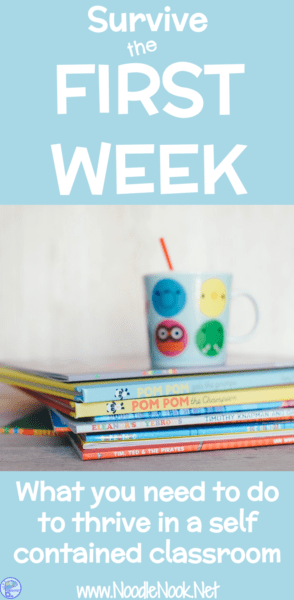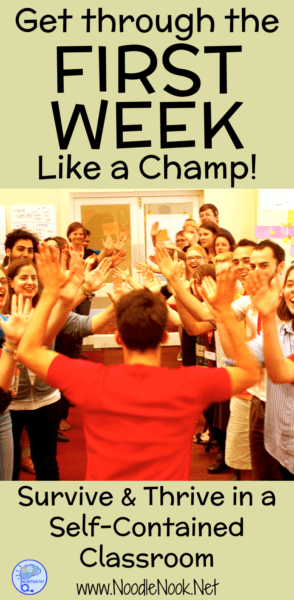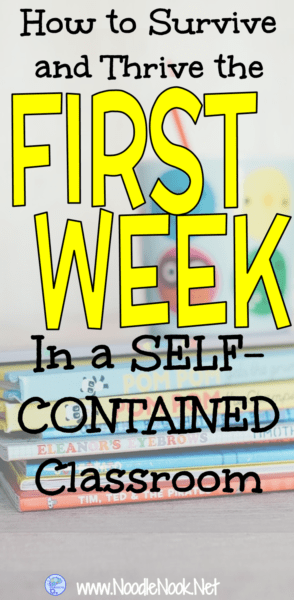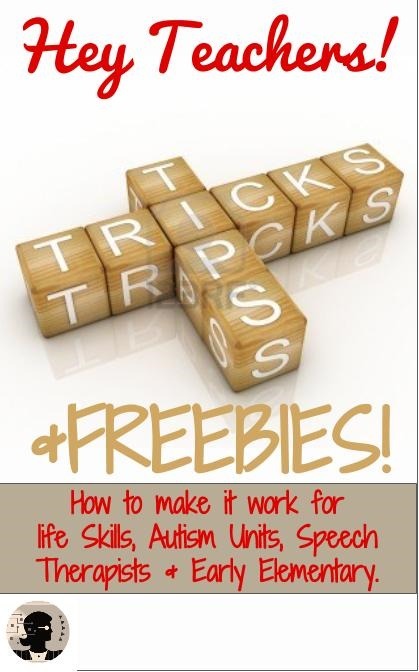Survive and Thrive in a Self Contained Classroom
When I walked into my first LIFE Skills classroom I was teaching so many different leveled students so many subjects (seemingly at the same time) I really didn’t know where to start. Like a lot of new teachers, I thought I could teach in self contained like I taught before- whole groups where I “performed” and called students to perform back on cue. Problem is self contained does NOT work that way. When you ask for a performance, you’ll likely get something you did not anticipate. I was in the classroom with non-responsive students, high functioning Autistic students, emotionally disabled students with a bevy of behavior problems, and students with Down Syndrome and varying levels of functioning depending on the task. I had a hard time planning lessons. After much trial and error, I found that the following things were absolutely necessary to survive and thrive in a self contained classroom.
[dt_gap height=”10″ /] [dt_gap height=”10″ /]
[dt_gap height=”10″ /]
Start Building in Independent Tasks
At some point or another, you will need students to work without you directly supervising- It will probably be because a student is having a behavior or medical issue… but if you can get independent tasks in place, it will also carve out time for you to work with small groups or one-on-one with targeted students as well as time to get all your data done.
You have to find an activity students can do without you. Problem is, when I say this, I often see teachers designate “independent” tasks as computer time, magazine reading, or puzzles. While I have no problem with these (some of the time)- all of the time is a bit much. Create a repetitive task for students that they enjoy which still has an academic function.
A great example, I had a student who loved menus- loved food too! We finally created a laminated sheet she used with a dry erase marker to copy the items she would like to eat on her “order card”. This activity, over time, turned into an addition activity, money counting task, and budgeting activity- all of which she did on her own (after initial modeling). Throughout, the task was academically based, kept her busy, and, even though she was a very basic reader, she could do it all alone. Bottom line, there have to be things the students can do without you right next to them!
 [dt_gap height=”10″ /]
[dt_gap height=”10″ /]
Streamline Data Collection
Data. It’s like the big, black, shadow looming over your shoulder every day you’re in the classroom. You know you have to get it done. You know you have to see every kid… and every kid has a different kind of goal you have to get to. If you have not figured out a way to collect data quickly and easily within the classroom, it will always feel like a chore.
A. Very. Horrible. Chore.
I saw one teacher with a folder for each student with activities for data collection inside as well as data sheets in the front and directions on how to do trials laminated on the front. This allowed whatever para was available to grab a folder and get to it. To-do folders were in the top basket and ta-done folders in the bottom so she always visually knew how much more was left to do.
I kept all my data for a single class/subject on one page for all my students that way I could see in one snapshot who needed what and how far I was as a whole.
Either one of these tactics will work. What WON’T work is thinking you will remember all the data on Friday when you sit down with your documentation. Not gonna happen. You will also not survive or thrive in a self contained classroom if you neglect to take data at all.
No matter if you do the drawer system for data, one binder per subject, one folder per student, or the one sheet mode- you will have to be consistent. I have seen teachers do several different things, but the bottom line is to find what works for you and git ‘er gone!
[dt_gap height=”10″ /]
[dt_gap height=”10″ /]
Use Peer Tutors
My brother has two girls. He says people bother him all the time to try for a boy, but his thing is if they have more kids, him and his wife would be outnumbered.
I feel his pain.
My paras and I are outnumbered all the time.
A great way to even the odds is to promote some kids into the “Student-Teacher” role. Have them read to other students, help with math, ask questions, work on flashcards, or whatever! My experience is the Student-Teacher feels great being a helper and the peer they work with loves to interact with someone other than me! It is also a great way for students to work on social skills and following multi-step directions. You will probably have to model what this looks like for your students and practice with some role playing, but try peer tutors and see- it can carve you out some time to get to that data.
And if you want to learn more about improving social skills in an Autism Unit or self contained classroom, read Social Skills for Students in Autism.
[dt_gap height=”10″ /]
[tweetthis]Survive and thrive in a self contained classroom- Read HOW![/tweetthis]
Make Smarter Materials
If there were a million hours in the day I could make a million activities for each of the million things all my students need to work on. If… but, alas, finding two minutes to pee is usually a challenge and every minute matters to me. I have to work smarter, not harder. When I take the time to make an activity, I have to know there is a way to use one item, 3 or 4 ways on 5-6 students over 7-8 months.
At least.
I can’t remake materials over and over again. To see an example, click here. And get the FREE version here.
I made this math activity to use with students working on purchasing math. I printed the three levels on three different colors to keep the sets straight and with those three sets, I could have students work on: Identifying the least expensive item, sequencing items from least to most expensive, adding 2, 3, 4, or more items with or without a calculator, adding items with discounts, adding items including tax, paying for items with cash, using the one up method, estimating total cost when purchasing multiple items, and writing checks for items for purchase- With the same 6 sheets of paper… all year. Work smarter not harder.
And if you are looking for ways to save on the lamination pouches that burn through a paycheck faster than a Kardashian on Rodeo Drive, check out this post: Laminating Hacks for Teachers.
[dt_gap height=”10″ /]
Have Clear Procedures (Routine, Starts, Transitions & Wrap-Ups)
From day one, start teaching procedures. I have procedures for everything from sharpening pencils to bathroom breaks to homework assignments (and even my non-readers, non-verbal, and non-responsive students get homework).
When the routine is clear and followed, there is calm in the room and those clear expectations make it easier for me to get done what I need to get done. You have to think about how you want the students to do things and then make it clear to them, model it, and demand it get done that way time and time again. There is a great setup guide available in the store that can help you think of how you need to set up your room and all the “don’t forget” things presented on a checklist!
First day, last day- rules don’t change. Be sure you have thought about how students enter the room and what their opening assignment is, how you will signal for transitions and what you expect students to do, how you end activities (especially the fun ones or if ends trigger behaviors), and all transitions.
Remember, stick with it. What things look like in November will be infinitely better than in August if you have a plan and follow through.
 [dt_gap height=”10″ /]
[dt_gap height=”10″ /]
Surviving and Thriving in a Self Contained Classroom
I do a lot of classroom observations and see teachers with all the best intentions and great lessons try to apply whole group 95% of the time. That simply does not work for most self contained classrooms. (If you need more about planning rotations and stations in a self contained classroom, read Stations Rotation in Autism Units.
You are working with a mash up of abilities, limitations, functioning levels, and behaviors- give yourself the edge you need to play your hand the best you can by doing these 5 things.. It makes the difference between just surviving and really thriving in your class!





I am a veteran teacher, but first year as a self-contained teacher. The first day of school starts tomorrow and I am clueless as to what or how to start. After reading the information provided, I feel better about meeting my students. The statement “Have a procedure for everything from day one” gives me a great start. I appreciate the examples (routine, starts, wrap-ups, etc.) and look forward to implementing all the advice given. Thank you.
Comments are closed.